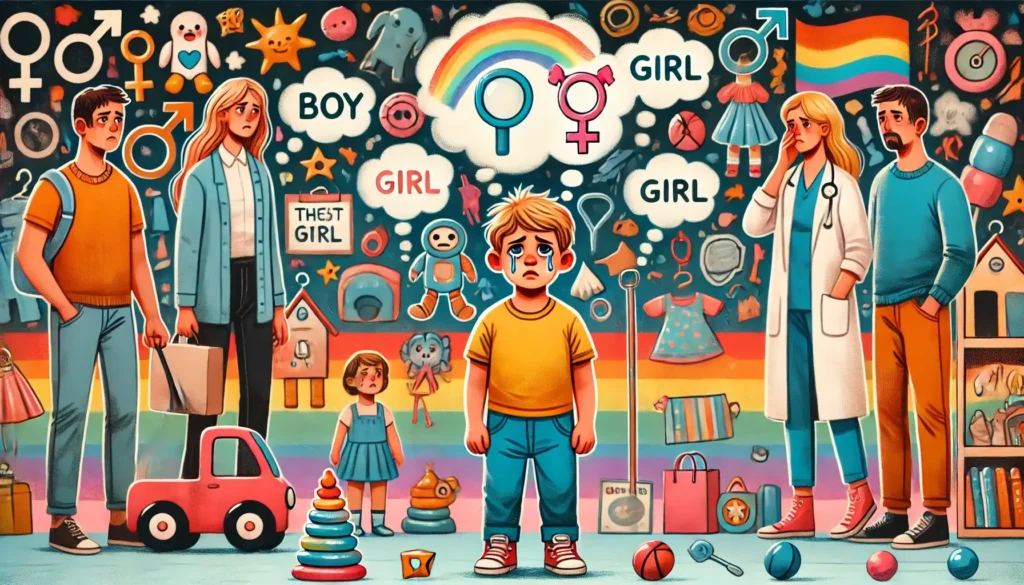Child Safeguarding Explained – Kids Need Reality, Not Identity Experiments
From Protection to Politics
Child safeguarding used to mean something obvious: keeping children safe from abuse, exploitation, and harm. But in recent years, it has been pulled into the culture wars. Instead of stability, children are increasingly exposed to ideological experiments about identity, gender, and sexuality — pushed not just in activism, but in schools, media, and even law.
The result? Kids, who need clarity and consistency, are now being used as test subjects in adult political battles.
What Is Child Safeguarding?
At its core, safeguarding is about ensuring children grow up in safe, stable environments where they can thrive. That includes:
- Physical safety – protection from abuse and exploitation.
- Emotional stability – a secure home and school environment.
- Clear boundaries – age-appropriate education and guidance.
Traditionally, safeguarding was universal and non-controversial. But with the rise of identity politics, the term has been hijacked to push ideology instead of protection.
How Identity Politics Targets Children
Critical Theory offshoots like Gender Theory and Queer Theory treat children as early recruits for activism. In practice, that looks like:
- Schools – lessons about gender fluidity and self-identification, introduced before children can process them.
- Media – children’s programming laced with identity politics instead of neutral storytelling.
- Medicine – rising debates about puberty blockers and hormones for minors, despite long-term risks.
Instead of safeguarding, the emphasis shifts to “affirmation” — pushing children to question themselves before they even understand who they are.
The Risks for Children
Critics warn that ideological experiments around identity can do real harm:
- Confusion and anxiety – kids are literal thinkers; abstract debates about “fluid identity” leave them overwhelmed.
- Disruption of development – premature questioning of gender interrupts a child’s natural process of self-discovery.
- Social conflict – children who adopt activist identities risk bullying, while peers who resist the ideology risk punishment.
- Family tension – parents who object often find themselves sidelined by schools and professionals.
Safeguarding was meant to protect children from harm. Instead, ideology now exposes them to new risks.
Warnings from Professionals
Paediatricians and child psychologists consistently raise red flags:
- Developmental readiness – Young children don’t yet have the cognitive maturity to process complex gender concepts.
- Psychological impact – Conflicting messages fuel stress, anxiety, and even depression.
- Family dynamics – When schools push ideology, it often clashes with parental values, destabilising the home environment.
- Medical risks – Puberty blockers, hormones, and surgeries raise serious ethical questions. Children cannot fully consent to life-changing interventions.
These warnings echo a simple truth: kids need stability and clarity, not ideological experiments.
Why Institutions Push It
If safeguarding is supposed to protect children, why is it being turned into activism?
- Academics – use children as the testing ground for theories about identity and fluidity.
- Activists – gain political leverage by framing children as symbols of “progress.”
- Corporations – package children’s products with diversity branding to look virtuous.
- Politicians – parade safeguarding reforms as modern, while ignoring real issues like poverty or education standards.
Children become pawns in battles fought for power, careers, and image.
The Consequences
When safeguarding is politicised:
- Children lose the stability they need most.
- Parents lose trust in schools and institutions.
- Teachers are caught between ideology and responsibility.
- Society becomes polarised, with children in the middle.
The irony? Safeguarding was meant to keep kids safe from harm. Now it risks exposing them to a different kind of harm — ideological confusion and lifelong consequences.
Why It Matters
Childhood is short, fragile, and formative. It should not be a playground for ideological battles. Safeguarding must return to its original meaning: protecting children’s wellbeing, not re-engineering their identities.
Without clarity, children pay the price for adult politics. And that’s the one thing safeguarding was supposed to prevent.
Visit our Women & Biology Explainer Hub to see how law, sport, rights, and safeguarding all collide with ideology.
FAQ: Child Safeguarding and Identity Politics
What does child safeguarding mean?
It means protecting children from harm and ensuring they grow up in safe, stable environments.
Why is safeguarding controversial now?
Because activists and institutions use it to promote gender and identity ideology, often at odds with children’s developmental needs.
What’s the risk of teaching gender ideology to kids?
Confusion, anxiety, disrupted development, family tension, and even exposure to risky medical interventions.
Who benefits from politicised safeguarding?
Academics, activists, corporations, and politicians — not children or families.
What should safeguarding focus on?
Safety, stability, and clarity — not ideological experiments.



